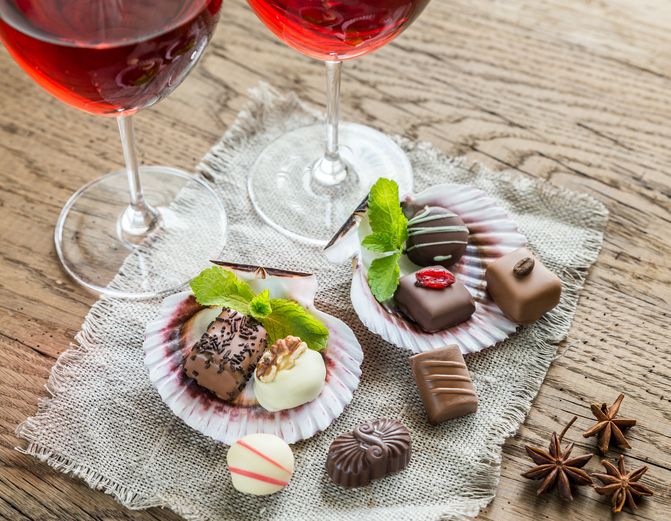
By Larry Mogelonsky, MBA, P. Eng. (www.lma.ca)
Chocolate is a highly romantic food for the fast-approaching Valentine’s Day and, of course, wine goes with just about any meal, so why not bring the two together? While you might not have any many options as a wine and cheese tasting, pairing chocolate with these grape-based liquors may be just the ticket to winning the hearts and minds of incoming guests. You can apply this concept as a small-plate amuse bouche, an appetizer, a dessert or as part of some other cocoa-infused main.
Furthermore, much like any other edible staple with a bourgeois cachet, chocolate is also in the midst of an artisanal revolution. There’s now a plethora of high percentage dark, organic and single-origin providers, with culinary specialists all over the world concocting playful and delicious blends of quality chocolate as well as some very esoteric flavor combinations (coconut shavings, smoked bacon and dried banana to cite three).
As such, not only can you offer a range of chocolates organized by purity (90% or 65%) or country of origin (for example, Ecuador versus Ivory Coast), but also some wild horizontal tastings from the same chocolatier. As a start, include common additives like caramel, nougat, ganache, mint, cinnamon, nuts (beware of allergies!), berries, peanut butter or liqueur. Then, look beyond to real standout ingredients like tropical fruit, ginger, maple syrup, cayenne, wasabi, popcorn, pretzel bits, tea leaves and flower petals. With all these options, you may only need to consider a chocolate-only tasting and leave the digestif to the guest’s discretion.
To contrast this with the more common cheese pairings, you must take note that chocolate has a strong, sweet and bitter taste with none of the creamy or stinky notes that dairy provides. As such, there’s far less latitude when it comes to wine accompaniments. You need a pungent drop to make a copacetic match. Even though I live by the motto that any wine is better than no wine, I still wouldn’t recommend Pinot Noir, Sauvignon Blanc any other soft, dry varietal for this job.
To give you an example of how this might work, look to Lindt’s Pairings with Excellence in collaboration with the popular Californian winemaker J. Lohr. While softer bottles like Pinot Noir and Merlot are still on the menu, they are appropriately countered with tangy confectionaries while their fruitier chocolate products are paired off with fragrant, sugary white wines (Chardonnay and Riesling).
And then things get really complicated when you take into account white chocolates, milk chocolates and desserts lacking any cocoa ingredients but should nevertheless be included in any move for a wine-themed upsell (think crème brûlée, panna cotta or cheesecake). As such, my final piece of advice is this: you can’t go wrong with good chocolate! Creating interesting and diverse pairings, and your guests will be more than happy to go along for the ride.
This article may not be reproduced without the expressed permission of the author.
Editor’s note: To discuss business challenges or to discuss speaking engagements please contact Larry directly.


